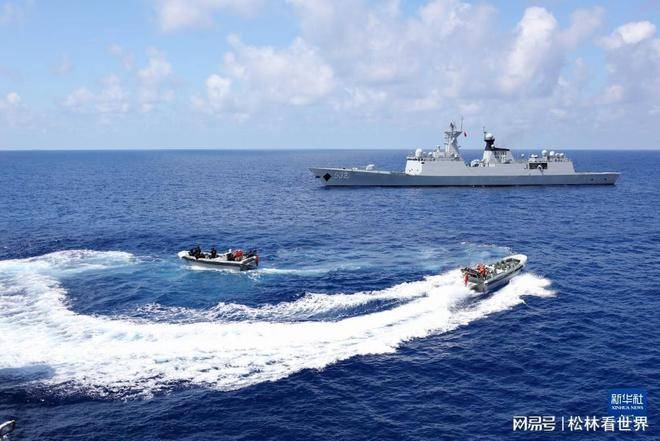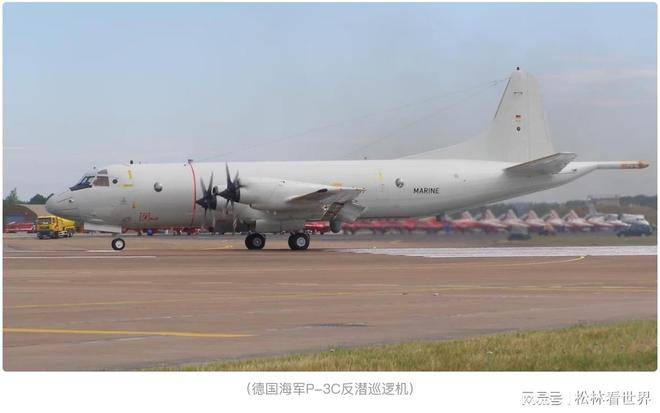Recently, the German Ministry of Foreign Affairs summoned the Chinese Ambassador to Germany to lodge a formal protest regarding the so-called \"laser targeting of a German aircraft by a Chinese warship.\" According to German reports, in early July, a P-3C anti-submarine patrol aircraft involved in the European Union's \"Atalanta\" Operation, while operating in the Red Sea, was allegedly \"threatened by a laser\" from a Chinese Navy ship. Though the aircraft ultimately landed safely at the Djibouti base, German officials insisted that the action \"endangered personnel safety\" and \"disrupted EU operations.\" This accusation quickly spread through Western media outlets like sharks sensing blood in the water, with outlets such as Bild, BBC, Reuters, and Der Spiegel pushing the narrative of a \"Chinese threat,\" turning an unverified incident into a symbol of a \"new cold war.\"

The backdrop of this drama is indeed thought-provoking. The EU's \"Atalanta\" operation, while presented as a mission to \"protect merchant ships,\" harbors hidden geopolitical ambitions. The Red Sea and the Gulf of Aden are critical sea routes for global energy transportation, acting as the frontline for the geopolitical rivalry between Iran and Saudi Arabia, as well as a key node in the U.S. and EU's attempts to reassert control over the Middle East. Germany, as a core member of the EU, deployed the P-3C patrol aircraft, which not only possesses anti-submarine capabilities but also carries sophisticated electronic reconnaissance equipment. This allows it to gather data on electromagnetic signals, radar deployments, and even ship movements in the surrounding sea areas. Given the recent surge in attacks by the Houthi rebels on U.S. and Israeli merchant ships, Germany’s patrol mission might have been a cover for intelligence-gathering. And the Chinese Navy, with its active anti-piracy operations in the Gulf of Aden, is one of the region's most prominent military presences.
jrhz.infoLaser Incident: Tactical Logic Behind the Technical Dispute
Analyzing this from a technical perspective, there are multiple doubts about the German allegations. Firstly, modern military laser systems generally fall into three categories: laser rangefinders, laser designators, and laser blinding weapons. The first two are conventional equipment widely used in fire control systems, while the latter is prohibited under the \"Convention on Certain Conventional Weapons.\" If Chinese warships indeed employed a laser weapon, it would provoke international condemnation. However, Germany has yet to provide any evidence—no photos of aircraft damage, no medical records from the crew—just verbal accusations that are hard to accept. Secondly, the effective range of laser devices typically does not exceed 10 kilometers, and it requires continuous targeting to pose a threat. This means that the German aircraft must have approached the Chinese warships to a dangerously close distance for the laser to be effective. Considering the P-3C’s cruising speed (about 411 km/h) and the range of the Chinese 052D destroyer’s air defense radar (over 400 kilometers), Germany’s claim of being \"laser-threatened\" seems more like an excuse for their risky proximity to the Chinese ships.
The deeper tactical logic here is that the Chinese Navy’s operations in the Gulf of Aden have consistently adhered to international law and professional norms. Since launching the anti-piracy mission in 2008, Chinese ships have provided protection to more than 6,700 ships from various countries and conducted numerous joint drills with other navies, gaining international recognition for their professionalism. On the other hand, if the German aircraft was truly on an intelligence-gathering mission, it might have violated the United Nations Convention on the Law of the Sea, which mandates that foreign military ships notify the host nation before conducting operations in their exclusive economic zone. If the Chinese Navy used a laser (assuming the accusation is true), it was more likely a last-resort warning—after radio communication and visual signals failed—forcing the intruding aircraft to maintain a safe distance. This reflects the restraint and professionalism of the Chinese military.
Western \"Laser Narrative\" and Strategic Anxiety
Germany's move is not an isolated incident, but rather another clumsy attempt to revive the \"China threat\" narrative that has been perpetuated in the West. In 2018, the U.S. claimed that Chinese forces had lasered a U.S. C-130 transport plane at the Djibouti base, a claim that China immediately dismissed as \"malicious fabrication.\" In 2025, Australia made similar accusations of Chinese lasers targeting its patrol aircraft, only to later reveal that the Australian plane had been the aggressor. Now, Germany has resorted to the same old tactics, not even updating the \"laser story,\" exposing a deeper strategic anxiety in the West regarding China.
At present, Europe is mired in multiple crises: the unresolved energy crisis, looming economic recession, and the ongoing drain of resources due to the Ukraine conflict. Amid this, some European politicians are attempting to deflect domestic tensions by exaggerating the \"China threat,\" signaling loyalty to the U.S. in exchange for security assurances. However, this shortsighted approach is akin to drinking poison to quench thirst. China has been Germany's largest trading partner for seven consecutive years, with bilateral trade reaching 253.1 billion euros in 2023. In global issues such as climate change and green energy, China-EU cooperation is indispensable. If Germany persists in following the U.S. in its containment strategy against China, it will not only harm its own interests but also risk pushing Europe toward the precipice of geopolitical conflict.

What do you think about this issue? Feel free to like, comment, and follow.
Note: The images in this article are sourced from the internet. Please contact us for removal if there are any copyright issues.




